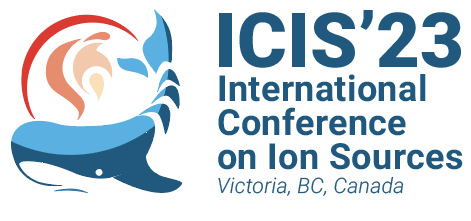Speaker
Description
The Reaccelerator (ReA) of the Facility for Rare-Isotope Beams (FRIB) at Michigan State University (MSU) uses a helium gas-filled Radio-Frequency Quadrupole (RFQ) ion trap and an Electron-Beam Ion Trap (EBIT) as a charge-breeding system. Rare isotopes produced via projectile fragmentation or in-flight fission are selected by the Advanced Rare Isotope Separator of FRIB and stopped in a helium gas cell before transport at low energy to ReA. Continuous ion beams are injected into the RFQ trap, which cools and bunches the ions, that are then ejected as ion pulses. The ion pulses are injected into the EBIT, captured, charge bred, ejected, and accelerated by the superconducting linear accelerator of ReA to several MeV/u.
The electron current of the EBIT (300 - 600 mA) limits its capacity to ~2E10 charges, yielding maximum rates of less than ~2E10 pps for light ions. An upcoming upgrade to the EBIT electron gun is expected to provide 2 A in current. In parallel, a high-current electron-beam ion source (HCEBIS) is being commissioned. In its present configuration, the HCEBIS can provide an electron current of 2 A. An upgrade will increase the current to 4 A. The implementation of these two upgrades is expected to allow for maximum rates of ~2E11 pps (light ions), compatible with FRIB projected rates. This will also provide redundancy of the breeders.
We present the status of the upgraded EBIT and HCEBIS. We also review the expected high-intensity capabilities of the future ReA frontend considering the maximum capacity of the RFQ trap.
This material is based upon work supported by the U.S. Department of Energy, Office of Science, Office of Nuclear Physics and used resources of the Facility for Rare Isotope Beams (FRIB), which is a DOE Office of Science User Facility, operated by Michigan State University, under Award Number DE-SC0000661.
| Funding Agency | U.S. Department of Energy, Office of Science |
|---|---|
| Email Address | lapierre@frib.msu.edu |
| I have read the Code of Conduct to attend ICIS2023. | Yes |

